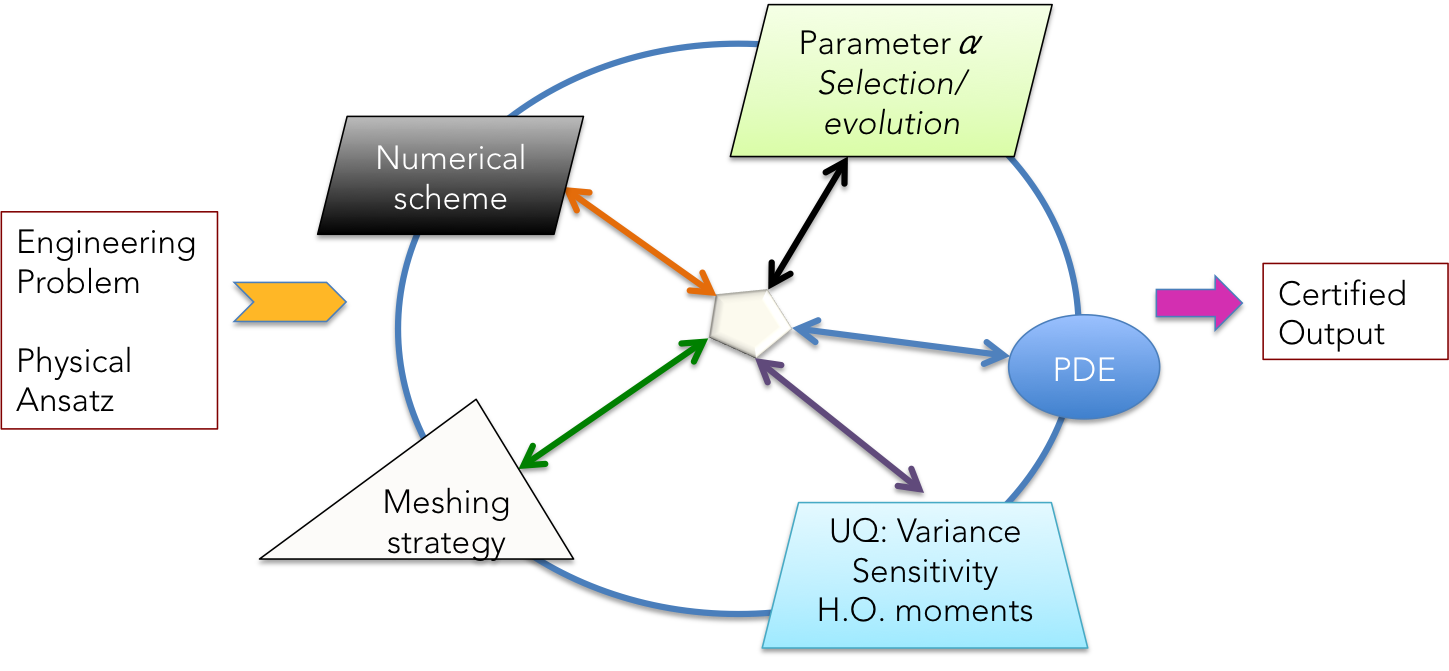Section: Overall Objectives
Our approach
The schematic of figure 1 shows the standard way a certification study may be conducted.
The red box is the main robust certification loop which contains separate boxes involving the evaluation of the physical model,
the post-processing of the output, and the exploration of the spaces of physical and stochastic parameters (uncertainties).
The physical model itself, is composed of the 3 main elements: PDE system, mesh generation/adaptation, and discretization of the PDE (numerical scheme).
There are some known interactions taking place in the loop which are a necessary to exploit as much as possible the potential of high order methods [112] such as
e.g.
As things stand today, we will not be able to take advantage of the potential of new high order numerical techniques and of hierarchical (multi-fidelity) robust certification approaches
without some very aggressive adaptive methodology. Such a methodology, will require interactions between e.g. the uncertainty quantification
methods and the adaptive spatial discretization, as well as with the PDE modelling part.
Such a strategy cannot be developed, let alone implemented in
an operational context, without completely disassembling the scheme of the figure, and letting all the parts of the interact as in figure 2. This is what we want to do in CARDAMOM
Our strength is also our unique chance of exploring the interactions between all the parts. We will try to answer some fundamental questions related to the following aspects
-
What are the relations between PDE model accuracy (asymptotic error) and scheme accuracy, and how to control, en possibly exploit these relations to minimize the error for a given computational effort ;
-
How to devise and implement adaptation techniques (
-
How to exploit the wide amount of information made available from the optimization and uncertainty quantification process to construct a more aggressive adaptation strategy in physical, parameter, and stochastic space, and in the physical model itself ;
These research avenues related to the PDE models and numerical methods used, will allow us to have an impact on the applications communities targeted which are
-
Aeronautics and aerospace engineering (de-anti icing systems, space re-entry) ;
-
Energy engineering (organic Rankine cycles and wave energy conversion) ;
-
Coastal engineering (coastal protection, hazard assessment etc.).
The main research directions related to the above topics are discussed in the following section.



